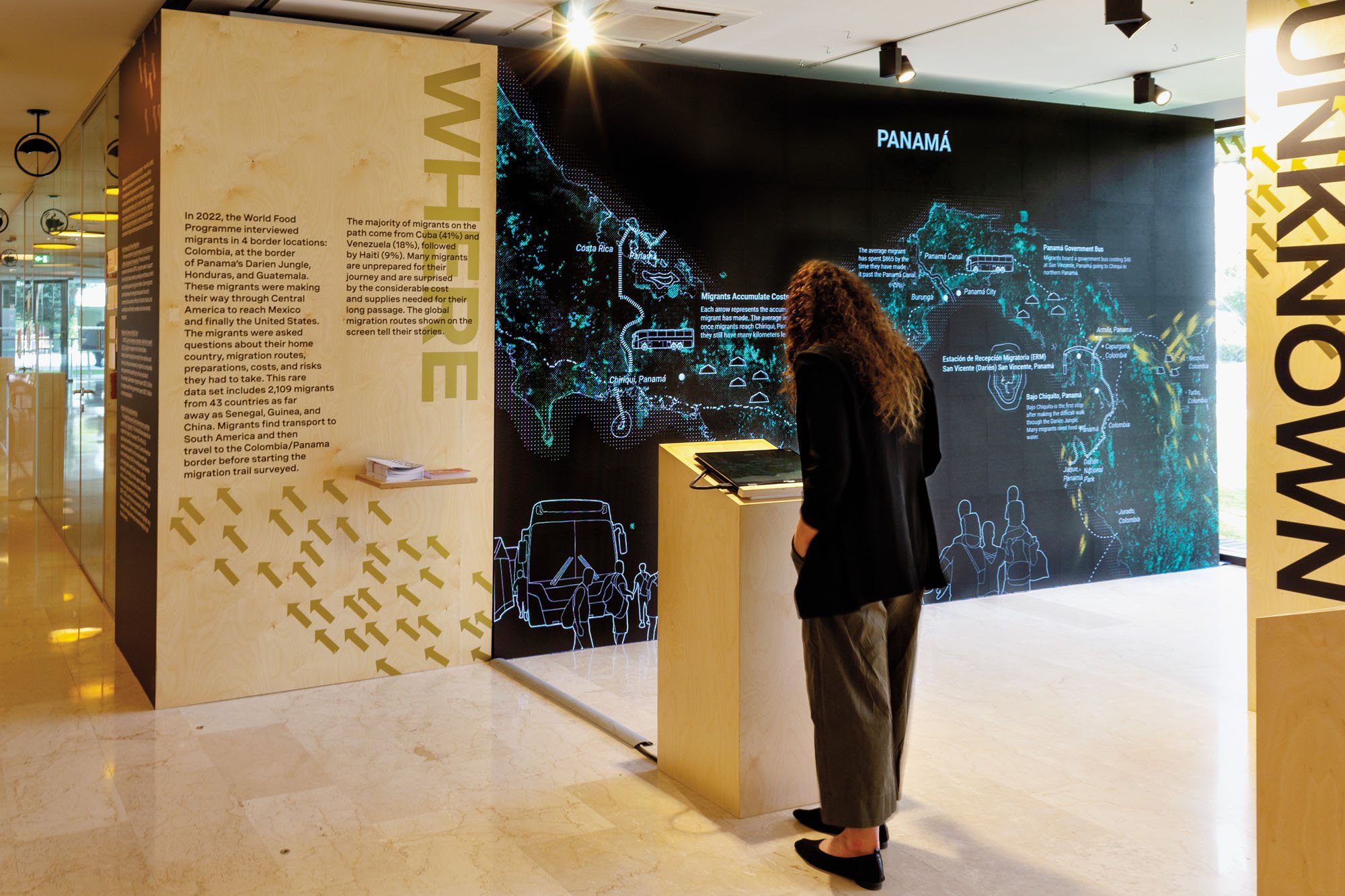
February 9, 2023
Surfacing the Stories Hidden in Migration Data
Breakthroughs in technology often cause more problems than they solve, resulting in negative consequences like social disorder, environmental degradation, and economic marginalization. But the winners of our second annual Responsible Disruptors program demonstrate that when employed thoughtfully, technology can make change for the better and disruption can be ethical.
At a distance, the Motivational Tapestry at the Massachusetts Institute of Technology’s Civic Data Design Lab (CDDL) might be mistaken for a decorative work of art. The multicolored, woven piece spans 15 by 8 feet and is arresting to the eye owing to the intricate folds composing its surface. However, closer inspection reveals its patterns of paper “currency” folded by Latin American migrants and printed with information about migration. Based on a data set of 1,624 individuals in El Salvador, Guatemala, and Honduras taken from a United Nations World Food Programme (WFP) survey in 2021, the currency is color-coded to represent individual migrants’ motivations for undertaking the arduous journey from Central America to the United States. Pieces of the tapestry can also be digitally scanned to reveal more details about individual migrants’ lives, showcasing the deep layers of the data in ways that allow its human facets to surface.

The Motivational Tapestry is a keystone in the CDDL exhibition and website Distance Unknown, a groundbreaking data collection and visualization project developed in partnership with the WFP and the Migration Policy Institute that communicates the root causes of migration through interactive, human-centered design. Beyond its success at presenting complex data in ways that captivate a broader audience, the CDDL’s approach also has led to understanding from new angles. “In the data, we found that migrants spend $2.2 billion collectively to migrate from Central America to the U.S.,” explains Ashley Louie, CDDL research associate. “Figuring out a way to visualize this information allows you to dive into the heart of migration motivations, such as the cost implications and the more complex issues that surround this topic beyond just a simple flow of people.”
The impact of Distance Unknown has also been felt on an international scale. The exhibition debuted in the summer of 2022 at the United Nations headquarters in Rome, where the Motivational Tapestry was presented alongside other visualizations, including an interactive map that highlights the journeys and barriers to migrants’ journeys through the dangerous Darién Gap region of Central America. “The Data Tapestry allowed a lot of people to get out of the normal conversations they have around migration—ambassadors that don’t typically talk to each other were having conversations,” notes Sarah Williams, director of CDDL and lead designer of the exhibition. “By allowing a dialogue to open up and be less defensive, art allows us to understand and conceptualize an issue from a different vantage point.”
Would you like to comment on this article? Send your thoughts to: [email protected]
Latest
Profiles
Billy Fleming and His Students Are Designing a Green New Deal
In his recent studio course, designer and University of Pennsylvania educator imagines a more just landscape architecture studio…by taking his students to a uranium mine in Greenland.
Projects
Passive House Is Now a Platform for More
Explore three projects that demonstrate a shift in thinking about the sustainability standard from a goal to a means.
Viewpoints
How Dune and Poor Things Rely on Architecture History
This year’s sci-fi and fantasy blockbusters are the latest in an ongoing relationship between architecture and science fiction.





